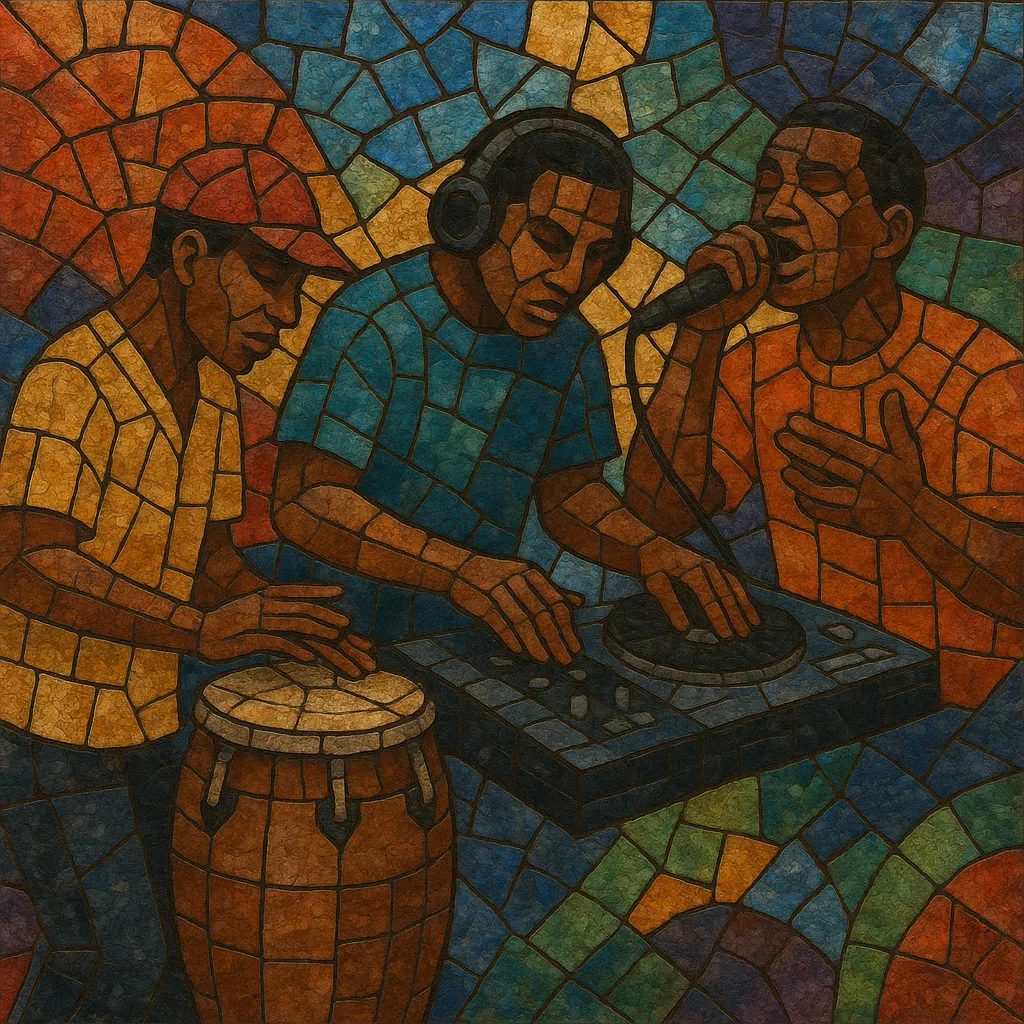
Merenhouse (also spelled mereng-house or meren‑house) is a dance‑floor fusion that blends the brisk, syncopated rhythms of Dominican merengue with the four‑on‑the‑floor pulse, synths, and club arrangements of house music, often seasoned with hip‑hop flows and DJ techniques.
Built around güira and tambora patterns but driven by punchy kick drums, sequenced basslines, and bright synth hooks, the style favors catchy chorus hooks, call‑and‑response chants, and bilingual (Spanish/Spanglish) verses. Typical tempos sit near house territory while retaining merengue’s kinetic feel, making it tailor‑made for 1990s Latin club culture in New York and beyond.
The sound crystallized in the Dominican diaspora, where producers and MCs recast merengue’s party energy for urban clubs and radio, yielding crossover hits that resonated with both Latin audiences and mainstream dance crowds.
Merenhouse emerged among Dominican and Dominican‑American communities in New York City, especially Washington Heights, where merengue bands coexisted with hip‑hop, Latin freestyle, house, and Eurodance. Club DJs and producers began layering güira and tambora patterns over house kicks and sampled breaks, adding rap verses and chantable hooks. Early experiments by bilingual crews showed that merengue’s contagious swing could thrive inside a club‑ready electronic frame.
By the early–mid 1990s, acts like Proyecto Uno, Sandy & Papo MC, Ilegales, and later Fulanito popularized the formula across Spanish‑language radio and pan‑Latin TV. Hits such as Proyecto Uno’s “El Tiburón,” Sandy & Papo’s “El Mueve Mueve,” Ilegales’ “La Morena,” and Fulanito’s “Guallando” cemented the aesthetic: four‑on‑the‑floor kicks, synth stabs, rapped verses, and merengue percussion driving fast, party‑centric anthems. The style’s bilingual swagger and club polish helped it cross from Latin parties into mainstream dance floors.
While its commercial peak waned in the 2000s, merenhouse’s hybrid DNA fed later Latin club styles. Its willingness to fuse traditional Caribbean rhythms with contemporary electronic production informed urbano latino, electro‑latino, and Latin pop/dance crossovers. Veterans continued touring, and revival sets keep the sound alive at 90s nostalgia nights. Producers still borrow its core idea—merengue’s percussion groove over modern club frameworks—whenever they want an instant, high‑energy tropical feel with metropolitan polish.

